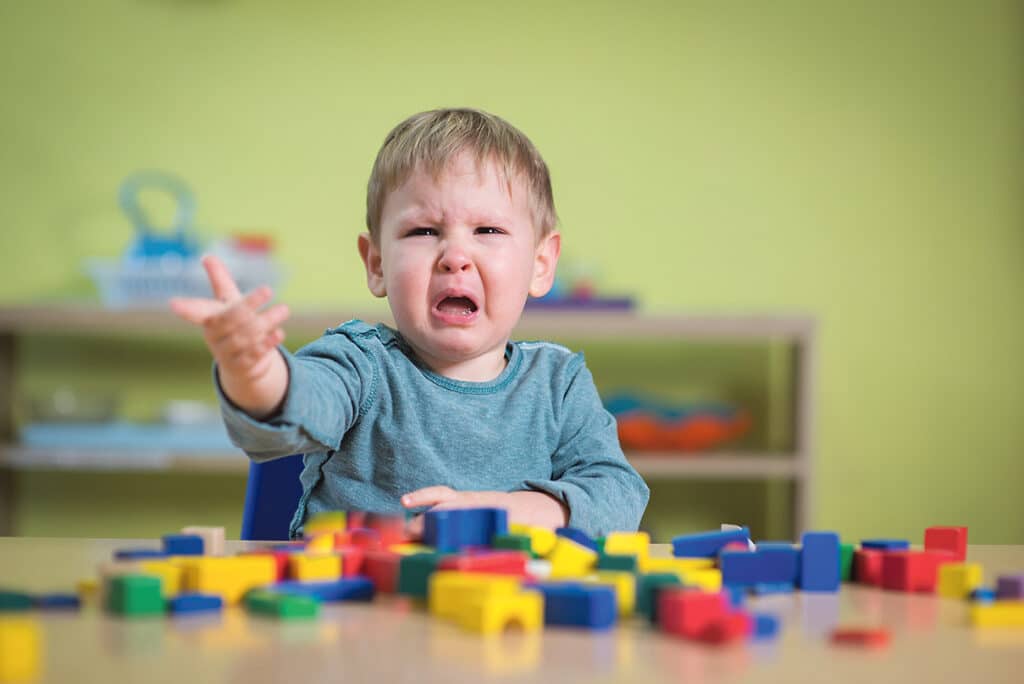In last month’s column Sarah covered the range of different factors that can be attributed to separation anxiety that persists past toddlerhood and beyond what can perceived as within the range of healthy and developmentally appropriate. This month she looks at ways to address the issue.

The two most common routes to addressing separation anxiety are therapy and medication. Oftentimes, the latter is required in very severe cases in order to allow the former to have a chance to commence. Here are a couple of common universal tips when proceeding forward with addressing your child’s separation anxiety;
1. Provide notice. Preparation is key, and so, preparing your child for the separation is essential. Notifying your child of an impending separation can be a trigger to some big feelings, and you may question yourself as to why you are creating upset long prior to the event occurring, but notice of the event, no matter the response, is a lot better than a sudden separation with no anticipation or prior warning. Additional measures can include visiting the place with the caregiver prior to the date of separation, introducing a new babysitter whilst in the company of the caregiver and creating a picture story book about it all and how things will proceed in order to give children advance notice.
2. Avoid sneaking away. When you have an overly anxious child, it can be tempting to tiptoe away and avoid the upset at the goodbye process. However, this allows separation anxiety to spread. When you are consistent with saying goodbye each and every single time, children can learn to come to trust the process, and to trust you, and know that you will not disappear and that goodbyes will result in your return.
3. Gradual desensitisation. Oftentimes when I am called to assist families with separation anxiety, I assess where the difficulty lies and where we would like to get to, and set a clear goal. Next, we need to look at all the small, baby steps that will get us to our end goal. We strip things back, start at step one, and take things in a gradual, step by step fashion. How this looks will vary from child to child and will be very individual to the circumstance and individual. We do not proceed forward until the current step in the chain has been mastered, and the child is happy and relaxed with accomplishing this step. That’s when children are in a good position to move forward, and we build up like this, overcoming fear and anxiety through each step of the way, eventually landing on a set interval of time spent away from the caregiver and within the context that it is required, with ease and the ability to cope.
4. Working with schools. It is really important for both caregivers and children to work closely with schools when children are exhibiting separation anxiety that persists beyond the first four weeks of starting school. Sometimes, you may need to bring in a professional to assist with this process, as it can be taxing on school staff at times.
5. Validate and label the child’s feelings. Anxiety is not something that is in a pre-schooler’s vocab. Sometimes, parents think that telling their child that they are ‘scared’ in a given situation can create a bigger deal, when all you want to do is try to minimise things and keep the situation low-key. You fear that your child will have it become ‘a thing’ through similar situations going forward. However, it is really important to teach children from an early age to identify their own feelings. We tell children when they are happy and sad, why not anxious too? This not only teaches children about this specific feeling and assist with identifying it, but it also shows that you recognise how they feel and that you are there to support them through it. Logic and reasoning in the moment can oftentimes be ineffective. So too can redirection and distraction tactics such as “Oh look, the playdough is out”, “oh wow, babysitter brought you a book” and so on. This can also sometimes be misconstrued by the child as you not seeing and recognising their overwhelming feelings to the situation as you try to talk them down and help them understand that there is nothing to worry about. You mean well, but you can see how things can stray.
6. Accidental reinforcement. Sometimes, parents can inadvertently reinforce big behaviours that stem from separation anxiety. Parents go into the classroom with them for a period of time, maybe take them home, cancel the babysitter, but what this teaches your child is that when they have a reaction this big, things will pan out fine for them. Don’t get me wrong, sometimes, this IS required in some instances to deescalate a dangerous situation. However, a repeated pattern of this kind of behaviour on the parent’s part can keep these big responses to separations trickling on. This is when a gradual desensitisation plan is required.
Assisting children with separation anxiety is a slow and gradual process. There is no quick fix that will result in long lasting change, but know that there is always a way forward and a family support plan to suit every child.


